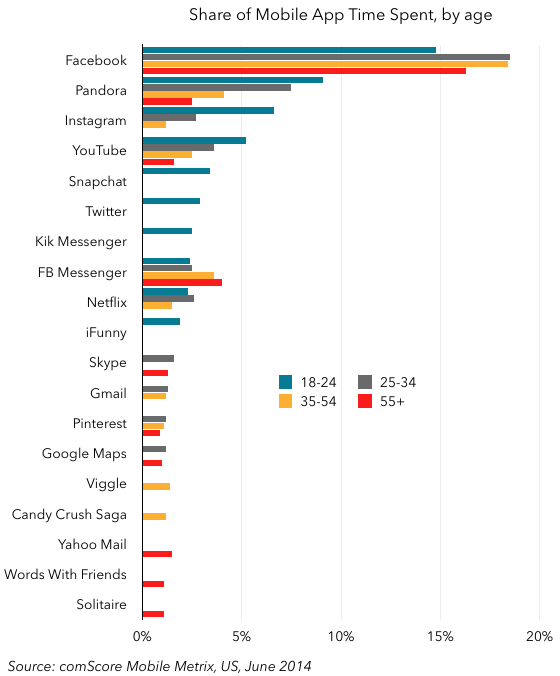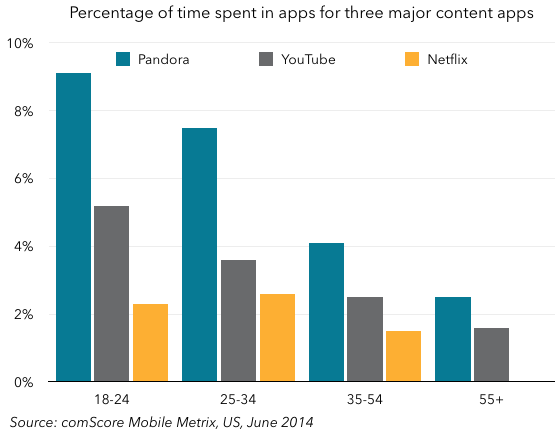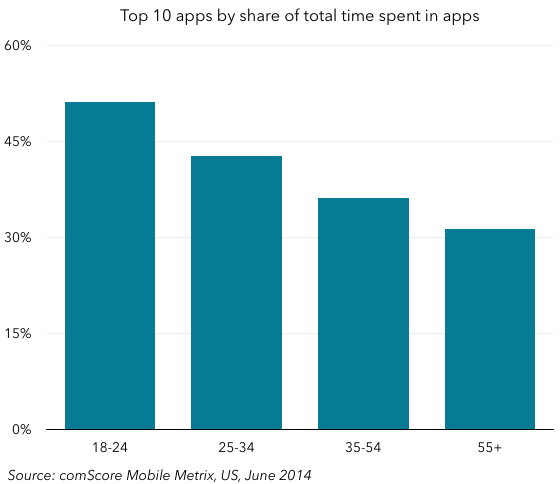Last week, Amir Efrati at The Information wrote about the decline in “original sharing” at Facebook. That’s a reference to the more personal type of posts that people might share using the status box on the service, as opposed to sharing links or other less personal information or status messages. The data shared in the article suggests that this original sharing was down 21% year over year in mid-2015, and down around 15% year on year more recently.
The interesting question here is whether this matters, and why. The article suggests that this is the most important type of sharing on Facebook, because these personal posts bring the most engagement. That’s likely true, and I think there’s also an element of FOMO (fear of missing out) associated with knowing what friends are really up to which drives Facebook usage. To the extent that friends are no longer sharing this personal information on Facebook, that reason for using its apps starts to go away.
However, what’s increasingly clear is that Facebook has evolved from a social network to a content hub over the last several years. Yes, it’s a content hub where the content you see is largely driven by what those you’ve deemed “friends” (whether they really are such or not). But increasingly the driver of which specific things you actually see is Facebook’s algorithm, which is driven a lot more by your interests than by your friends per se. And much of the content you’re consuming is likely not those personal videos but articles (perhaps increasingly hosted on Facebook itself), videos (including the recently introduced live videos), and other forms of content which aren’t personal in nature.
That evolution from a social network to a content hub has coincided with a growth in many other forms of more personal communication, most notably messaging. Facebook clearly saw this trend coming several years ago, and acquired Instagram and WhatsApp while also turning Messenger into a standalone product. But it also failed to acquire Snapchat, and faces competition from a number of other products in this area. To the extent that more personal communication is happening outside of the News Feed, Facebook remains a participant in several ways.
But I also wonder if we’re seeing something of a maturing of the Facebook experience. I always come back to a really insightful post written by venture capitalist Fred Wilson back in 2011. In the context of Twitter, he wrote:
“Let’s remember one of the cardinal rules of social media. Out of 100 people, 1% will create the content, 10% will curate the content, and the other 90% will simply consume it.”
In some ways, what’s important about Facebook isn’t that it is seeing lower sharing, but that it ever had such high sharing in the first place. Even at the lower rates of sharing Facebook is seeing today, the Information article says “57% of Facebook users who used the app every week posted something in a given week, the confidential data show. But only 39% of weekly active users posted original content in a given week”. That’s much higher than the numbers cited by Wilson, even if it’s come down a bit recently. I’d also argue that, to the extent that users are sharing URLs or videos rather than personal content, they’re simply shifting into that curation category, and that still benefits Facebook.
The article talks about live video as one of Facebook’s responses to the sharing problem, but I’d argue that Facebook is working on lots of other stuff that can be seen as a response too. I’ve written elsewhere that the Notify app Facebook launched a while back is an example of this. The new Videos tab Facebook is introducing is another example. It’s clear that Facebook has been planning to deal with this issue for some time now.
This gets back to another thing I’ve written about previously, which is the role Facebook plays in our daily lives. From a jobs-to-be-done perspective, I’ve argued that the problem Facebook really solves is killing time. At some point, I suspect Facebook will truly embrace its new status as a content hub and start serving up content that wasn’t even shared by your friends. At that point, the personal sharing will matter less, and what will matter the most is that you care about the content being shared and engage with it.



